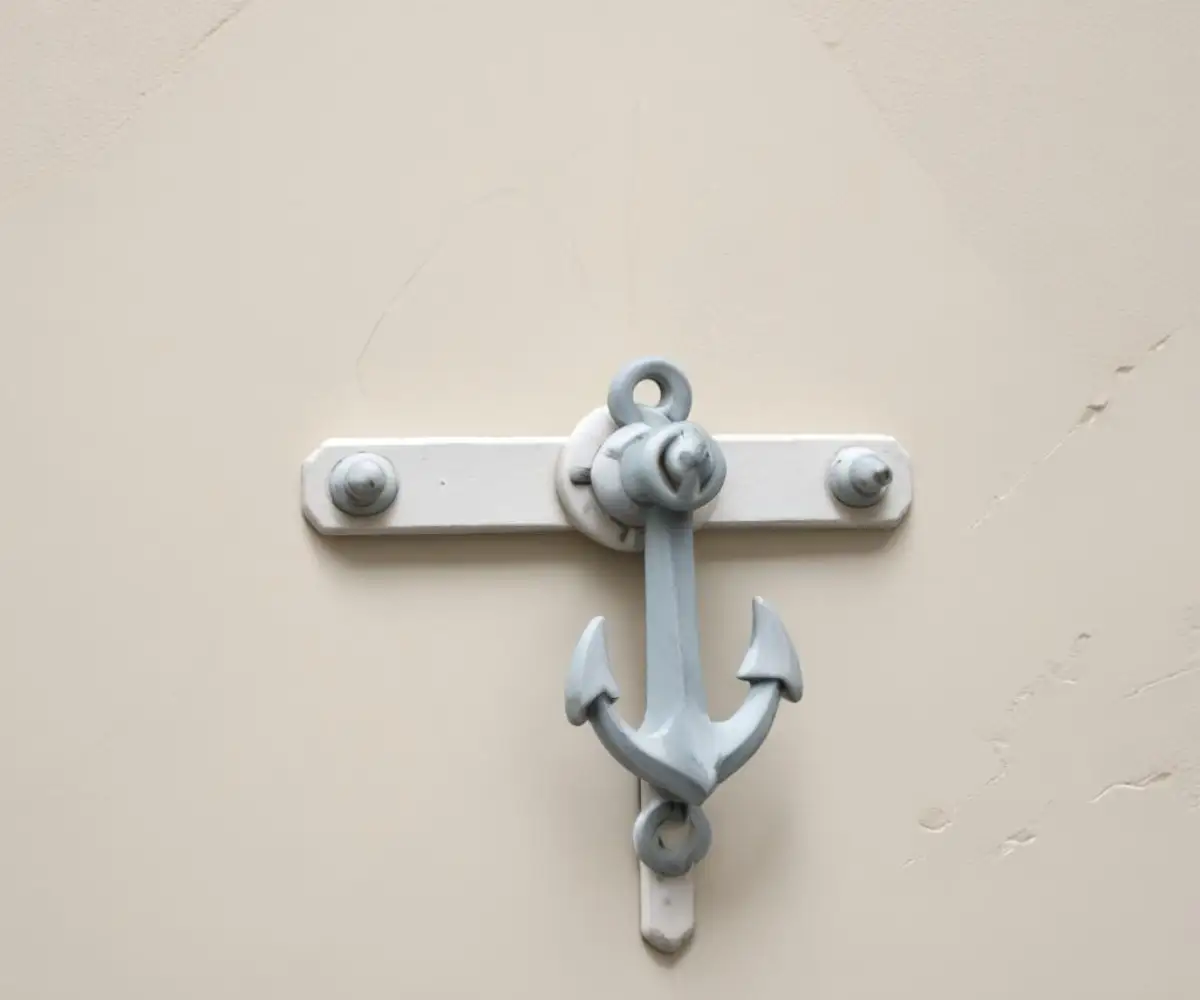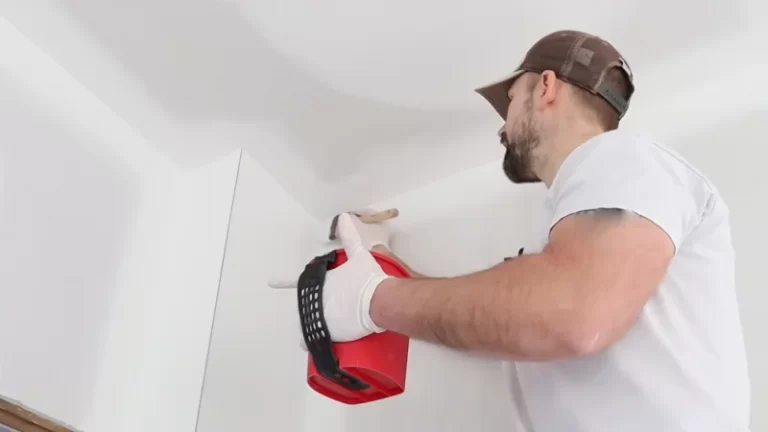How Much Weight Can Plaster REALLY Hold? Don’t Risk a Collapse!
You found the perfect spot for that heavy antique mirror. It’s the one place in the room where it will create a stunning focal point. There’s just one problem: you have plaster walls, and the thought of drilling into them fills you with a unique kind of terror.
Will the wall crack and crumble? Will you wake up to the sound of your beautiful mirror crashing to the floor, leaving a disastrous hole behind? This fear is common, and it’s rooted in a misunderstanding of how plaster walls work and what they can truly support.
The truth is, plaster itself is not designed to hold significant weight. Driving a screw or nail directly into a plaster surface is a recipe for failure. But that doesn’t mean your walls are useless. The secret to hanging almost anything on plaster lies not in the plaster itself, but in the structure behind it and the hardware you use.
You'll Learn About
The Problem: Why Plaster Is Not Like Drywall
Before you can solve the weight problem, you need to understand what you’re dealing with. Plaster walls, common in homes built before the 1950s, are constructed very differently from modern drywall. They consist of a layer of wet plaster applied over a framework of thin wooden strips called lath. The lath is nailed horizontally across the wall studs, creating a sturdy base for the plaster to “key” into as it dries.
This construction method creates a wall that is thick, dense, and excellent for sound insulation. However, it’s also brittle. Unlike drywall, which might bend or dent under pressure, plaster is more likely to crack and shatter if you simply hammer a nail into it. Driving a fastener directly into plaster provides almost no holding power and can easily cause the material to crumble and fail as soon as any weight is applied.
The key takeaway is this: you cannot rely on the plaster itself to support weight. Instead, you must rely on either the wooden lath behind the plaster or, for truly heavy items, the wall studs behind the lath. The real question isn’t how much weight plaster can hold, but what is the best way to anchor an object to the structure of the wall.
Screws and Nails Alone Are a Recipe for Disaster
It’s tempting to think a small screw will be fine for a lightweight picture frame. While you might get lucky, it’s a gamble. A screw turned only into the brittle plaster has no real grip and can easily pull out, taking a chunk of your wall with it. Even hitting the wood lath with a small screw provides limited support, typically for objects weighing less than 15-20 pounds.
For anything heavier than a small photo, you must use a wall anchor. Understanding how much weight a nail can hold is crucial, but that knowledge applies differently to the unique composition of plaster. Simple fasteners are not up to the task.
The Solution: Your Anchor is Everything
Since the plaster itself offers poor support, the solution is to use an anchor that bypasses the plaster and grips the structure behind it. The right type of anchor distributes the weight of the object over a larger area, preventing the brittle plaster from cracking under a concentrated load. For plaster walls, there are two primary heroes: Molly bolts and Toggle bolts.
These mechanical anchors are designed specifically for hollow walls like lath and plaster. They work by expanding behind the wall surface, creating a secure hold that sandwiches the wall material between the anchor’s flange and its expanded wings. This mechanism provides dramatically more holding power than any screw or plastic anchor could.

Choosing the Right Heavy-Duty Anchor
Your choice of anchor depends almost entirely on the weight of the item you need to hang. Using an anchor rated for 50 pounds to hang a 75-pound mirror is asking for trouble. Always err on the side of caution and choose an anchor rated for more weight than you need.
Molly Bolts (Sleeve Type Hollow Wall Anchors)
Molly bolts are an excellent choice for medium-to-heavy loads. They consist of a metal sleeve with a screw inside. When you drill a hole and insert the molly, tightening the screw causes the sleeve to expand and collapse like an umbrella behind the wall. This creates a very secure anchor point.
One key advantage of a molly bolt is that the screw can be removed and reinserted multiple times without the anchor falling into the wall, which is useful for items that may need to be taken down occasionally. A properly installed molly bolt can typically hold between 25 and 50 pounds in a plaster wall, depending on its size and the condition of the wall.
Toggle Bolts (Butterfly Anchors)
When you’re dealing with seriously heavy items like large mirrors, heavy shelving, or TV mounts, the toggle bolt is your best friend. These are the heavy-lifters of the anchor world. A toggle bolt consists of a machine bolt and spring-loaded “wings.”
You drill a hole large enough for the folded wings to pass through. Once inside the wall cavity, the wings spring open. As you tighten the bolt, the wings are pulled tight against the back of the lath, distributing the load over a very wide area. A toggle bolt can support 100 pounds or more, making it the go-to solution for most heavy-duty plaster wall applications.
Anchor Weight Capacity at a Glance
To make the selection process easier, here is a general guide to the types of fasteners and their typical load-bearing capacities in a lath and plaster wall. Always check the manufacturer’s packaging for specific weight limits, as they can vary.
| Fastener Type | Typical Weight Capacity (in Plaster) | Best For |
|---|---|---|
| Screw in Wood Lath | 5-15 lbs | Small picture frames, lightweight art, small clocks. |
| Plastic Wall Anchor | Not Recommended (5-10 lbs, high risk of failure) | Very light items only, if no other option exists. Prone to cracking plaster. |
| Molly Bolt (1/8″ or 3/16″) | 25-50 lbs | Medium-sized mirrors, towel racks, curtain rods, shelves with light loads. |
| Toggle Bolt (1/4″ or 3/8″) | 50-100+ lbs | Large, heavy mirrors, wall-mounted shelving units, small cabinets, TV mounts. |
| Screw into Wall Stud | 100+ lbs | The absolute heaviest items; TV mounts, grab bars, large cabinets, anything requiring maximum support. |
Step-by-Step Guide: How to Safely Install an Anchor in Plaster
Installing an anchor in plaster requires a bit more care than with drywall, but it’s a straightforward process. The key is to prevent the plaster from cracking during drilling. Follow these steps for a secure and damage-free installation.
Step 1: Mark Your Spot and Apply Tape
Once you’ve determined the perfect location, mark it with a pencil. Then, place a piece of painter’s tape over the mark. This simple trick helps prevent the plaster from chipping or cracking around the edges of the hole as you drill.
Step 2: Drill a Pilot Hole Slowly
Choose a drill bit that is the correct size for your chosen anchor (this is usually printed on the anchor’s packaging). A standard twist drill bit will work, but a masonry bit can provide a cleaner hole. Start drilling on a slow speed with gentle, steady pressure. Let the drill do the work; forcing it can cause the plaster to crack.
Step 3: Widen the Hole to the Final Size
Once the pilot hole is through the plaster and lath, switch to the final drill bit size required for your anchor. Again, drill slowly and carefully to enlarge the hole. You will feel a change in resistance as the bit moves through the plaster, then the wood lath, and finally into the hollow cavity behind it.
Step 4: Insert and Set the Anchor
For a toggle bolt, pinch the wings together and push them through the hole. You will hear and feel them spring open inside the wall. Pull the bolt back towards you to ensure the wings are flat against the back of the wall before attaching your item.
For a molly bolt, gently tap the entire anchor into the hole until its flange is flush with the wall. Then, use a screwdriver to turn the screw clockwise. You will feel resistance as the sleeve expands. Keep turning until it feels very snug. Finally, back the screw out to attach your bracket or item.
The Gold Standard: Anchoring to a Stud
While toggle and molly bolts offer excellent support in hollow sections of a plaster wall, the absolute most secure way to hang anything heavy is to anchor it directly to a wall stud. A stud is a vertical framing member that provides the structural backbone of the wall. Driving a long screw through the plaster and lath and into a solid wood stud provides the maximum possible holding power.
How to Find Studs in a Plaster Wall
Finding studs in a lath and plaster wall can be tricky. Standard electronic stud finders often fail because the density of the wood lath confuses them. However, you have a few reliable methods:
1. Use a Magnetic Stud Finder: This simple tool doesn’t look for the wood stud itself, but for the metal nails or screws used to attach the lath to the stud. Slowly slide it across the wall until it sticks to a spot, indicating a nail head. You will typically find a vertical line of these nail heads over each stud.
2. The Tap Test: Gently knock on the wall with your knuckle. A hollow sound indicates a space between studs. As you move across the wall, the sound will become a duller, more solid thud when you are over a stud.
3. Look for Clues: Wall studs are typically spaced 16 or 24 inches apart on center. Outlets and light switches are almost always attached to the side of a stud. Once you find one stud, you can often measure from it to find the others.
So, before you give up on your decorating dreams, remember that your plaster walls are more capable than you think. By ignoring the plaster and focusing on the structure behind it, you can hang almost anything with confidence. Choose the right anchor, take your time with the installation, and you can avoid that dreaded crash in the middle of the night.

